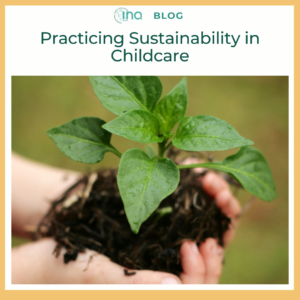 By Aussy Aportadera
By Aussy Aportadera
Sustainability refers to the responsible use of today’s resources without compromising the access of future generations. This has become a rallying point for businesses and a topic for awareness campaigns. However, one can argue that the best way to promote a sustainable lifestyle is to start them young.
This has led to sustainability being a part of almost every aspect of our daily life, including child care. Not only is it being introduced as a part of the curriculum, but even nannies can bring it with them as they take care of other people’s children. Here are a few ways of practicing sustainability with the children in your life:
Introducing sustainability concepts
There are a number of sustainable practices that are important to introduce (or reintroduce) to children. The best example is the concept of recycling, which, when taught to individuals early in life, makes them more likely to carry this practice into their later years. Recycling can be started in the home by using color-coded waste-segregation bins, one of which is for recyclable materials. The same strategies are applied for introducing sustainability for kids as with those used to promote sustainability in the org or workplace for adults.
Similarly, since kids respond better to visual stimuli, you can teach about plants and flowers. Aside from what they are and how they thrive and reproduce, some educational ideas include the purpose plants serve in the environment. To take it one step further, include gardening activities that usually culminate in the kids tasting freshly harvested fruits or vegetables.
Use environmentally-friendly alternatives
Teaching children about sustainability is better when they can see concrete examples around them. Like most organizations or companies, you can also make small eco-friendlier changes in the home that demonstrate their commitment toward making a positive impact. For starters, there are other paper options you can adopt for varying purposes. There is eco-friendly paper, which is essentially a manufactured product that has a zero-carbon footprint.
Additionally, you can also cut down on your use of single-use plastics, turning to reusable alternatives. For example, instead of disposable plastic bags, you can encourage the kids in your care to use eco-bags or other containers. The same goes for feeding time; even though you can eat delivered food with the child in your care, it’s always better to use the home utensils. You can always wash it afterward and save on otherwise single-use plastic.
Adopting a green mission statement
Almost every organization has its own vision and mission statement that outlines its goals, objectives, values, and commitment to all its stakeholders–the same goes for nannies and other childcare professionals. By including sustainability as part of your mission statement, or simply by explaining it to the parents at an opportune time, you inform your them about your stand regarding social and environmental responsibility and declare your active participation toward achieving and maintaining those goals.
This is becoming a part of mission statements for organizations, and it also works as a part of your personal and professional commitment to your clients and your community. Also, having sustainability in your mission statement provides a number of benefits. For childcare professionals, it will guide your actions and determine the example you will set for your fellow professionals and the children under your care. Also, parents may be more likely to entrust their children to a socially and environmentally responsible person.
Develop sustainable use policies
To support your green mission statement and set another example for kids, it’s important to develop and implement environmentally conscious practices during your stay with them. It can start with the responsible use of water and energy. Furthermore, you can always keep track of your progress and commitment to environmental sustainability by using checklists or routinely conducting audits regarding these aspects.
Additionally, you can make it inclusive to everyone by posting your sustainable use policies on your social media page if you have any. This way, you can tell people about your commitment to sustainability.
Involve everyone in the conversation
They say that it takes a village to raise a child, and the same goes for raising socially and environmentally aware children. From your time with the child to meetings with fellow childcare providers, even to conversations with parents, make sure to include efforts to involve everyone in this campaign. It usually starts by informing them of what’s happening or what their children are doing when they’re in your care. You can also try imparting your sustainable choices, practices, and policies so parents can emulate them –made easier with the use of digital media.
As for children, it’s important to make them feel included. Listen, and if possible, entertain their ideas regarding waste disposal and management. They can also have a more active role through simple everyday tasks such as being aware of how much leftovers they have or how the garbage bin is already full.
Conclusion
The home is an important setting for teaching children to be more socially and environmentally conscious, increasing their chances of adopting a sustainable lifestyle when they grow up. However, it is important to note that imparting this framework requires a holistic approach that includes curriculum modifications to an organizational commitment toward sustainability. After all, it’s hard to preach what you don’t practice. Lastly, aside from molding the next generation of responsible adults, Nannie’s can use this opportunity to involve a larger part of the community through the families of the children in their care.
Aussy Aportadera is pursuing the unhurried life in the beachside town of La Union, Philippines. After a career in communications and publishing for luxury lifestyle, food, and wine, she is now a yoga teacher and co-owner of a ceramics brand.
https://twitter.com/writeraussy
https://instagram.com/aussyinyoga
